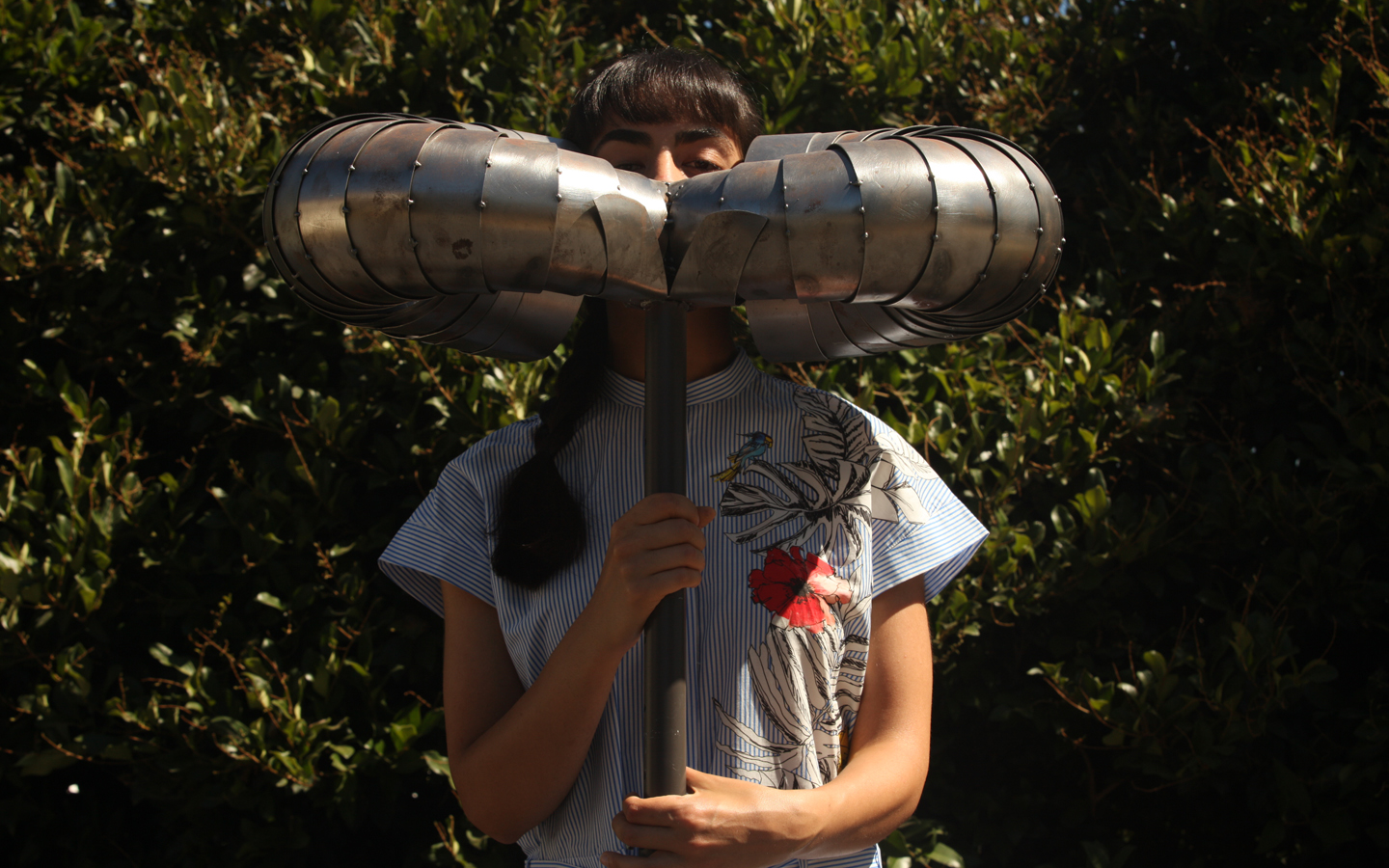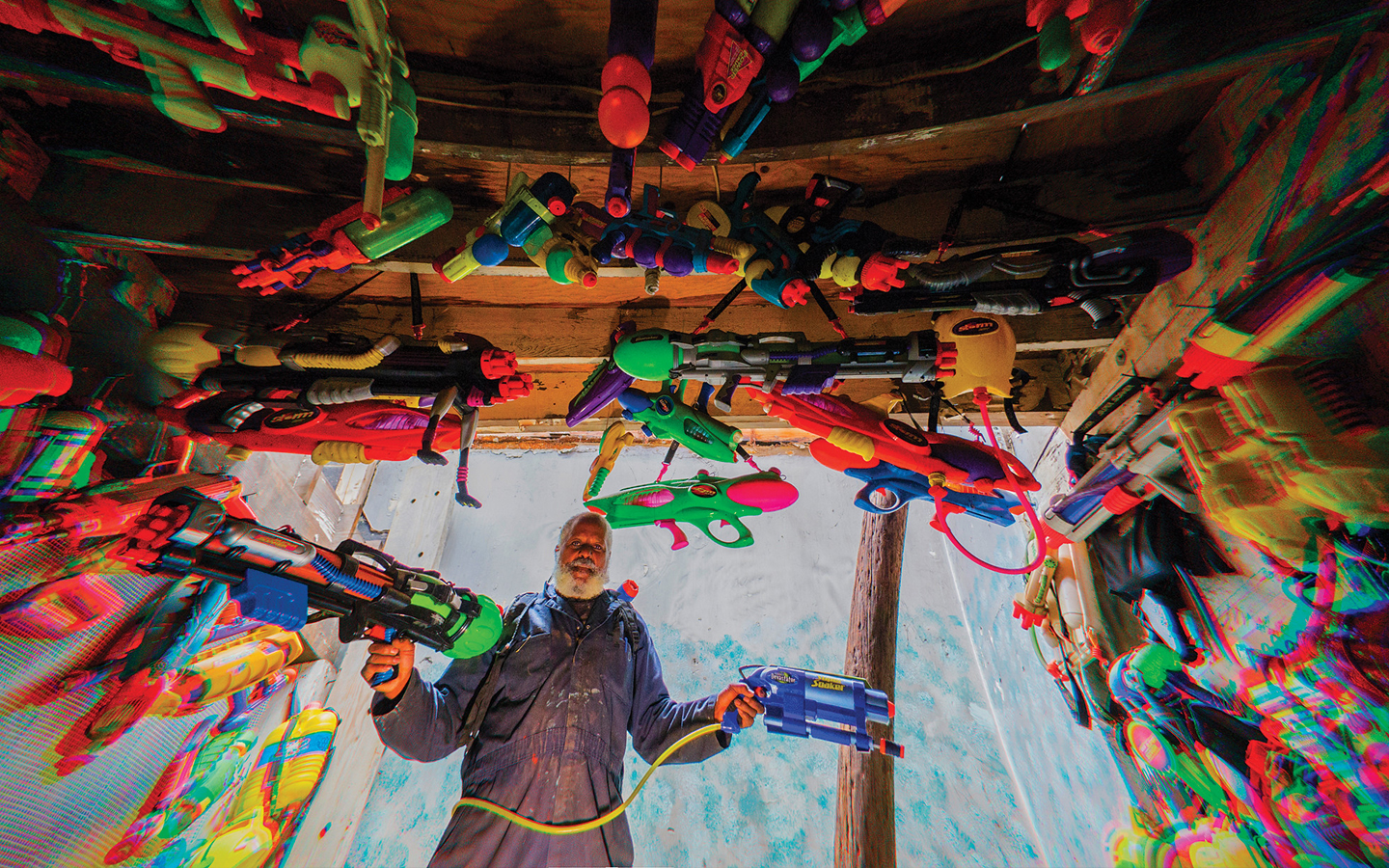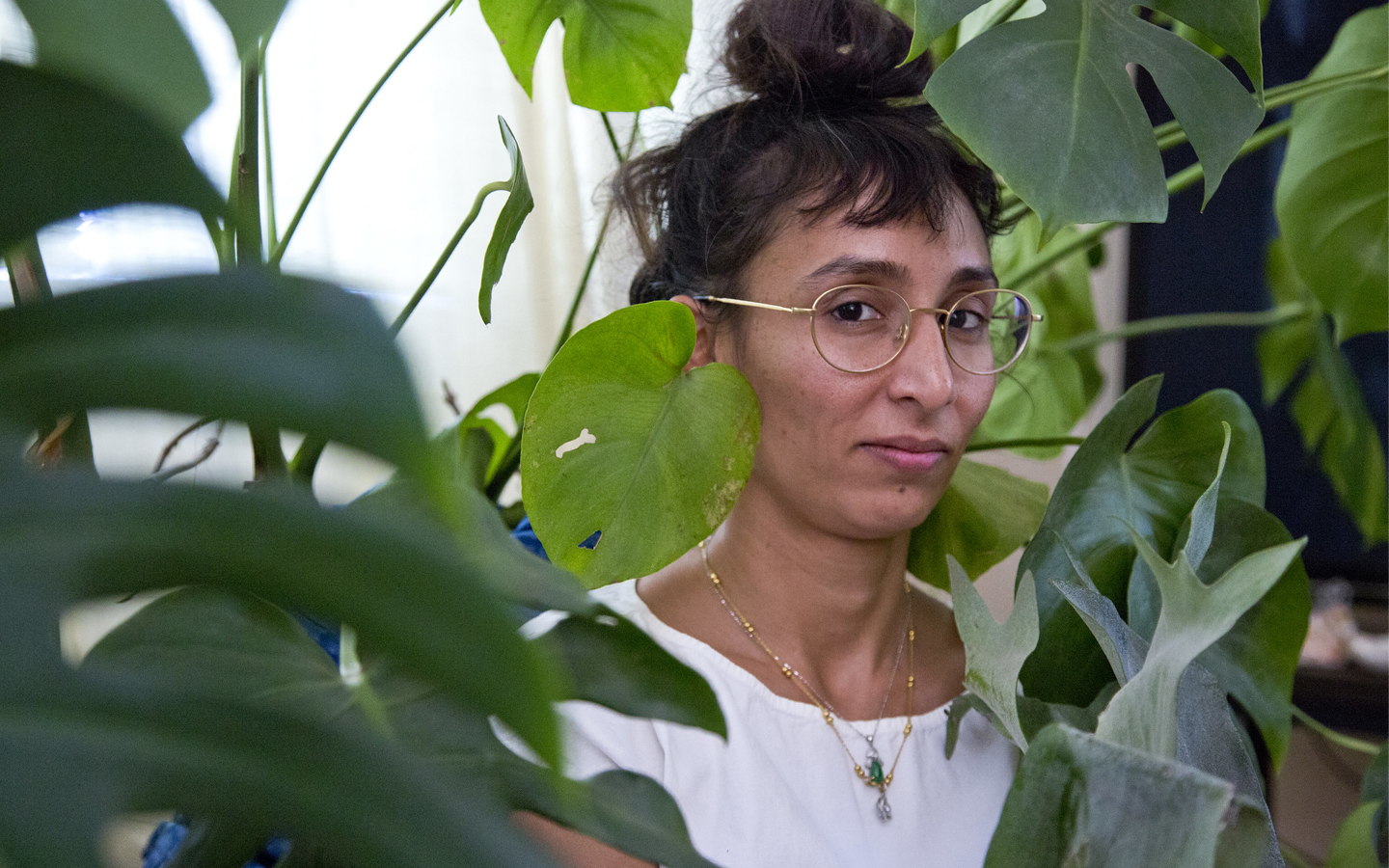
Roksana Pirouzmand
TEXT AMANDA ROBERTS
VISUAL PETER DA SILVA
In a world that consumes 140 characters at a time, words have lost their potency. We haphazardly string letters together, assuming they carry the full weight of our message, never wondering if a more effective way to get our point across exists.
Performance artist Roksana Pirouzmand challenges our nonchalant attitudes about communication, compelling us to seek authentic connection outside of language barriers. As a native Farsi speaker, the challenges of communicating in a new language shape her artistic ideas. While many performance artists act as the subjects of their own work, Pirouzmand incorporates anonymity into her performances. She liberates the audience from its role as passive voyeurs by requiring active participation. We are intended to speak with the performance and exist within its dialogue, both literally and figuratively.
While living in her hometown of Yazd, a mid-sized, conservative city in the desert of central Iran, Pirouzmand first grew curious about art. She enrolled in high school as an art major, and recalls being introduced to modern art for the first time, “I remember that I had heard of Picasso, but I didn’t know what his art looked like. I went to the library and learned that Kandinsky was my favorite artist.”
There was little public support for avant-garde artwork in Yazd, and Pirouzmand recalls her first exhibition proposal being denied by school administrators. There is a long history of underground creatives flourishing in oppressive environments, and Pirouzmand quickly found her own network of collaborators. With the help of a supportive professor, she and seven like-minded female artists met every Friday (the weekend in Iran) on their empty school campus. Dubbed “The Friday Girls,” they were free to create work that would not have been approved in their regular school program.
Using tactics reminiscent of the dissident Guerrilla Girls art movement, The Friday Girls were able to secure their first exhibition in 2009. With the aid of their professor, they submitted an exhibition proposal that was not entirely forthcoming.
Included in that show was Salam, one of Pirouzmand’s earliest performance pieces. She spent the seven-minute act inside a four-foot cube constructed from a wood frame and transparent sheeting. Throughout the piece, she repeats the word “salam,” the Farsi word for “hi.” She begins calmly, but her speech gradually grows more frantic. At the two-minute mark, Pirouzmand coats the plastic in black paint, obscuring the audience’s view of her. Near the end of the performance, an overhead shower is turned on, and much of the paint begins to wash away. By the end, Pirouzmand’s traditional Iranian garb clings to her soaked body, her hijab just barely hanging on her head. Most of her hair is revealed. Her wet clothes pushed past the traditional boundaries of modesty, and The Friday Girls were not asked back for future exhibitions.
To further her practice, Pirouzmand attended CalArts, just north of Los Angeles, notable as the breeding ground for such renowned artists as Catherine Opie, Mark Bradford, and Mike Kelley.
Young artists in intensely competitive programs like the one at CalArts often fall prey to over-conditioning and over-seriousness. But in an act of quiet revolution, Pirouzmand’s work began to take on more humor. Speechless, performed in 2016 at CalArts, might be one of the most playful pieces in Pirouzmand’s oeuvre. She constructed a cone-shaped ceramic sculpture, mounting the helmet-like piece high enough to slip her head through. Standing with her back to the wall, face covered, she’s essentially anonymous, yet available for dialogue through a removable mouthpiece at the tip of the sculpture. When speaking through it, a participant’s words can be heard only by the artist, but rendered almost entirely unintelligible. Pirouzmand communicates back through a similar mouthpiece.
What Speechless gives us is effectively a mobile confessional booth: “It was the first idea that I had when I came [to the U.S.]. I always had this confession idea, making objects that you could confess through without the others being able to understand you. I like the therapeutic act of being able to say something without the [vulnerability] of being understood.”
Speech Examiner, is a playful, interactive counterpoint to Speechless, that examines the limitations and frustrations of spoken language. Two horn-shaped aluminum tubes cover each ear, connected to a centered mouthpiece, as participants step into the work and speak directly to themselves. “I was thinking about the Art Institute in particular,” Pirouzmand says. “Sometimes I can’t participate, sometimes it’s hard for me to understand…. there is no pressure for you to be heard by someone else.”
With her piece Let Me Explain It, Pirouzmand removes verbal language entirely, leaving only canvases, thread, and a needle. She removes her body from the equation, spending the three-hour performance hidden inside a cube of wood strainers and canvas.
She begins the performance by pushing a needle through the canvas, then waits for a bite from a gallery-goer. “I was not sure how I was going to start it…” she says, “but then I [heard] someone around me. I poked the needle out… the person noticed the needle. I tapped the fabric, suggesting that they need to do something, so the person took the needle out and then put it back. Then other people realized how it works.”
While performing Let Me Explain It, Pirouzmand noticed reactions similar to those that happened during Speechless. Both the anonymity and the physical proximity of participants and artist allowed people to feel unencumbered by expectations to speak a certain way. “Even though they knew that a person was there, they seemed like they were not concerned about me hearing,” she notes.
By the end of the performance, the canvases, peppered with threaded lines, served as a transcript of the abstract conversations inspired by the piece. We are invited to let go of what specifically we are communicating and instead explore a new way of how.
Swing (2014) and Moving Room (2016) both directly address how the human body exists in relation to space and distance from other people. In Swing, Pirouzmand projects a live feed of her hometown in Iran onto a large sheet hung floor to ceiling. She spends the performance on a swing, attempting to lunge forward far enough to reach the projection. The performance elicits a familiar and intense sensation: that deeply human feeling of missing someone, or somewhere. With the help of a lone viewer, she is able to just barely skim the projection with her foot, conveying the distance between her and her hometown.
Moving Room, on the other hand, examines how a lack of space impacts us. Pirouzmand sits on one side of a twelve-by-eight-foot room built on sliders. Visitors enter the vacant half, which features a small TV monitor displaying a live feed of the opposite side. As they enter, the artist begins to slowly push the back wall inwards, shrinking the viewer’s space. “The idea is about the body being in space, and how much you take up,” she explains.
An overhead camera captured the reactions of viewers; many left the room quickly, clearly uncomfortable in such close quarters. Others stayed longer after learning they could push the wall back and negotiate with the artist on the amount of space they occupied.
While Pirouzmand communicates with unparalleled intention, her work is like communicating through a tin-can telephone. We might not comprehend each individual word, but the connection is tangible and deliberate. It reminds us that even when our calls and texts fall short, there’s always a better way to stay in touch.
You may also like
Charles Dickson
Charles started making things as a five-year-old child afflicted with asthma, when he became interes
Eve Kemp
“This metal thing was hurling down upon me, so I became metal too and hurtled back.”
Harpreet Kaur
When Kaur shows us some of her work, she is sure to point out the pieces that she hates. “Even whe




